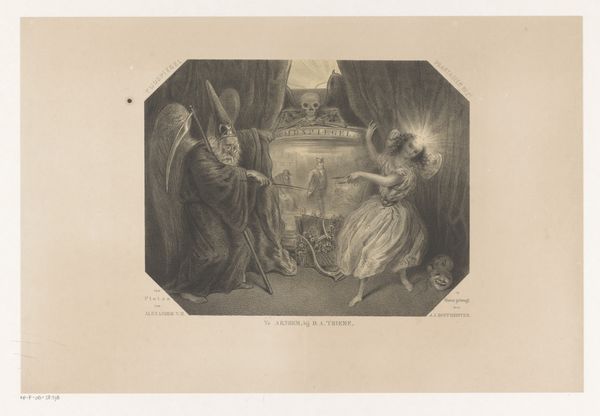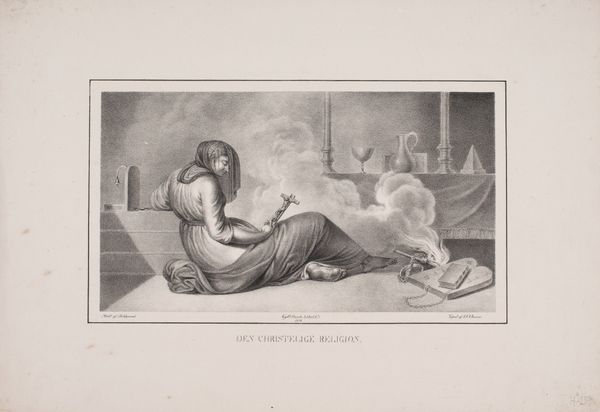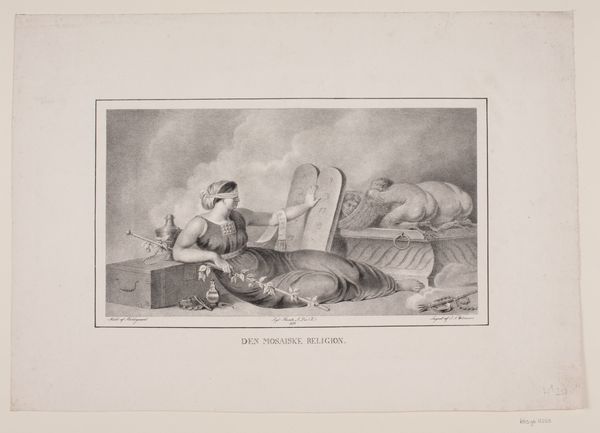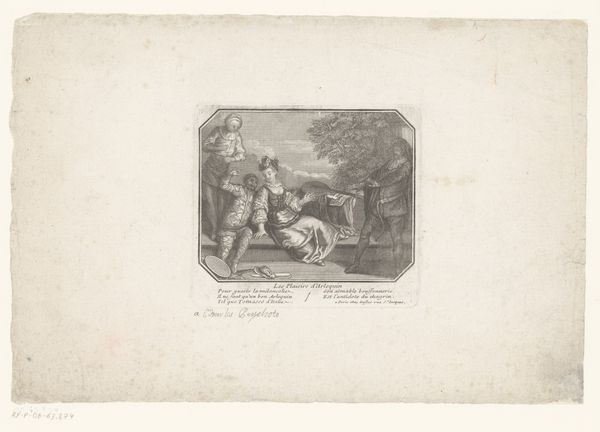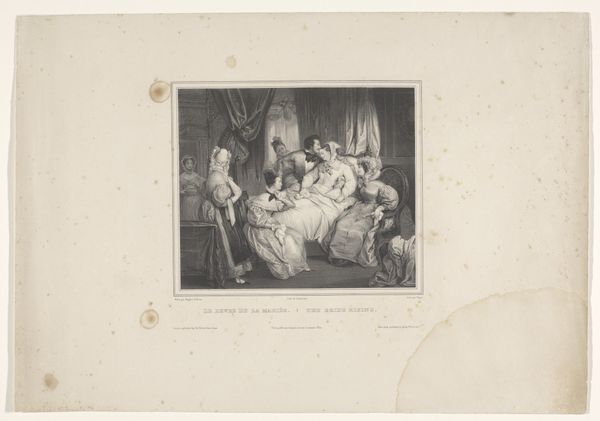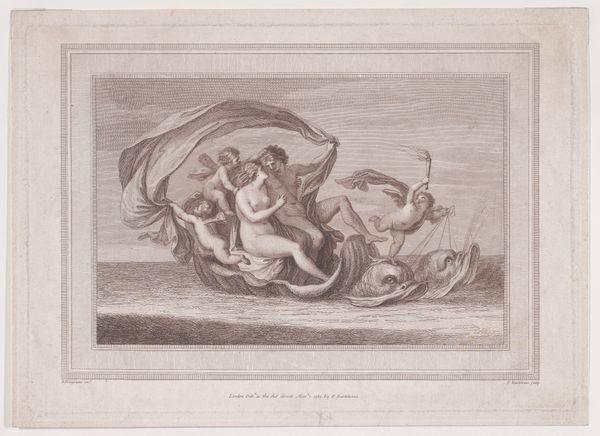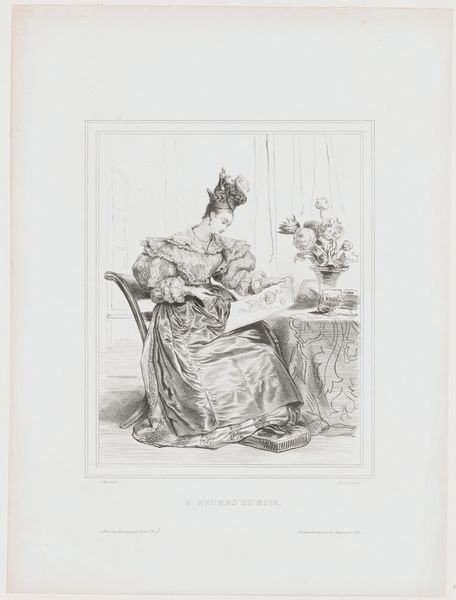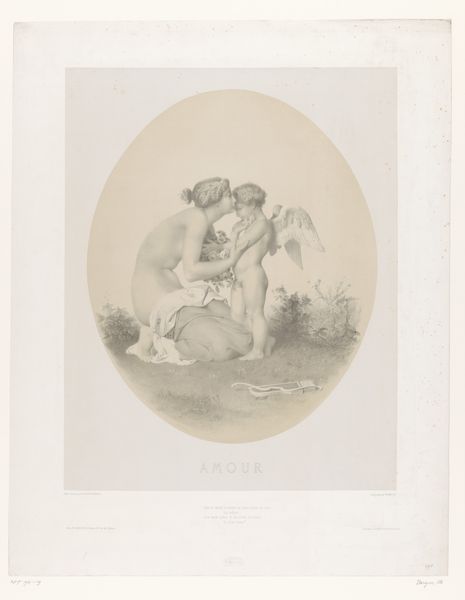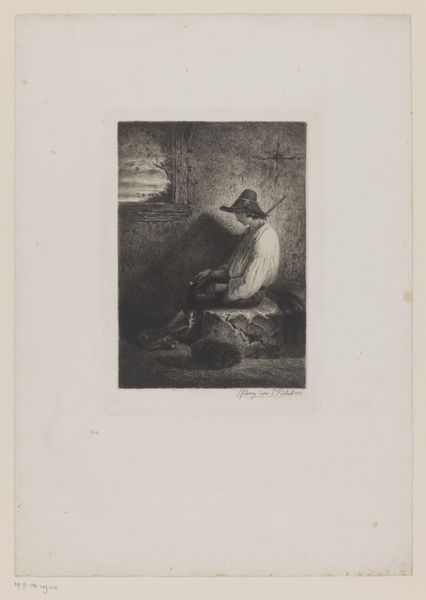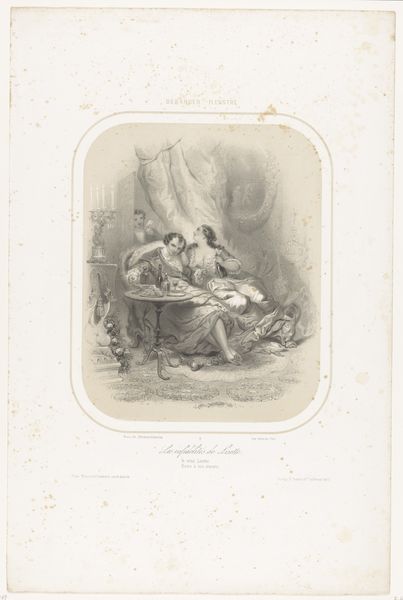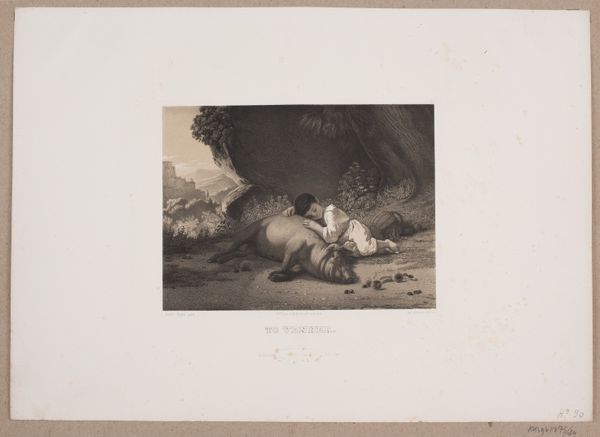
lithograph, print, engraving
#
portrait
#
neoclacissism
#
allegory
#
lithograph
# print
#
landscape
#
figuration
#
line
#
history-painting
#
engraving
Dimensions: 327 mm (height) x 469 mm (width) (bladmaal)
Curator: Let's turn our attention to "Den muhamedanske religion," or "The Muslim Religion," a lithograph created around 1825 by J.F. Clemens. Editor: It’s striking how stark it is. All those lines creating shapes, shadows... It almost feels austere, despite the flowing drapery of the figure. Curator: Austere is a good word. This work embodies a Neoclassical style, popular at the time, that looked back to classical antiquity for its ideals. Notice the allegorical figure, blindfolded with a sword – seemingly representing justice, but presented here to symbolize Islam. Editor: And she's seated amongst these… broken items? Is that supposed to symbolize something material broken as well, by perhaps, the sword, and by extension the representation of Islam here. Curator: Yes, it appears to be commentary of Clemens' perspective of the Islamic world through objects such as a broken chain, suggesting limitations and constraints placed upon societies by religious tenets. And you have a pot or vase along with other implements... Editor: Given it’s a print, how do you think this image would have been consumed at the time? Mass-produced, easily distributed…a visual tool for reinforcing specific ideologies? Curator: Exactly. Prints like these had a wide circulation and were instrumental in shaping public opinion and disseminating particular political and social perspectives of the time, serving as effective visual propaganda. I suspect its imagery resonated within a Europe struggling to comprehend foreign influences and maintain Christian centered views. Editor: I am still very aware of that striking blindfold. It lends this artwork such an ambiguous edge, both powerful and vulnerable. It almost reminds me of old allegorical personifications in printed media that tried to distill national ideas into specific graphic imagery. Curator: Indeed, Clemens' work functions as both an aesthetic and historical artifact, revealing the complexities of cultural representation and perception during a particular historical moment. Editor: It certainly gives one pause to reflect on the artwork's craftsmanship while contextualizing the role such an object would play within Europe's growing access to global representation.
Comments
No comments
Be the first to comment and join the conversation on the ultimate creative platform.
